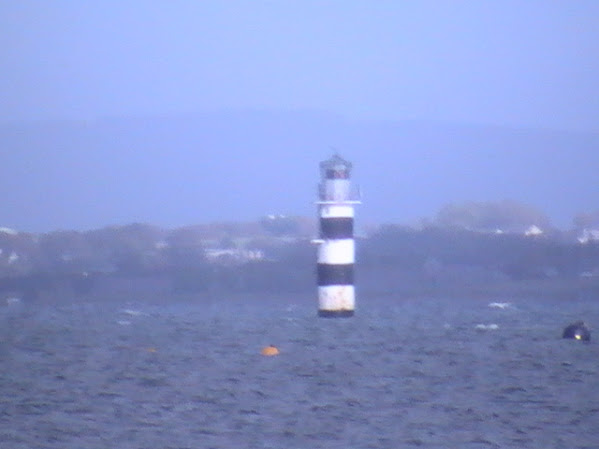This is an Irish lighthouse blog and in all the years I've been writing it, I have never featured a lighthouse from the USA or indeed from Liechtenstein, Uzbekhistan or the Central African Republic. So this is a first and probably an 'only.'
My thanks go to Carissa, one of the students at Fuller's Library in New Hampshire. They wrote to me a while ago, requesting information on lighthouse sites I would recommend to help them with a maritime project they were doing. I sent them back a list I put together and wished them well.
One of the lighthouse sites that I failed to include was this one which features a wonderful graphic of 100 lighthouses of the USA, together with a footnote about the oldest, the tallest etc. Carissa thought I would like this chart and, through one of her tutors, Mrs Skye Olley, forwarded it on to me.
I have to admit it is a terrific graphic. I have seen only about five of the hundred and it has certainly whetted my appetite to visit some more. It is great to see all the different colours and sizes and shapes on one page, emphasising the tremendous variety of lighthouses in the States.
It also makes me wonder if a similar chart could be done for Ireland? Get Irish Lights or the Great Lighthouses of Ireland team on the job and produce a tick-off chart for all our coastal beacons. It could be great to get younger people interested in our own maritime heritage.
So again, my sincere thanks to Carissa. Hopefully, her kind act may spawn something beautiful over this side of the pond.
My thanks go to Carissa, one of the students at Fuller's Library in New Hampshire. They wrote to me a while ago, requesting information on lighthouse sites I would recommend to help them with a maritime project they were doing. I sent them back a list I put together and wished them well.
One of the lighthouse sites that I failed to include was this one which features a wonderful graphic of 100 lighthouses of the USA, together with a footnote about the oldest, the tallest etc. Carissa thought I would like this chart and, through one of her tutors, Mrs Skye Olley, forwarded it on to me.
I have to admit it is a terrific graphic. I have seen only about five of the hundred and it has certainly whetted my appetite to visit some more. It is great to see all the different colours and sizes and shapes on one page, emphasising the tremendous variety of lighthouses in the States.
It also makes me wonder if a similar chart could be done for Ireland? Get Irish Lights or the Great Lighthouses of Ireland team on the job and produce a tick-off chart for all our coastal beacons. It could be great to get younger people interested in our own maritime heritage.
So again, my sincere thanks to Carissa. Hopefully, her kind act may spawn something beautiful over this side of the pond.
















